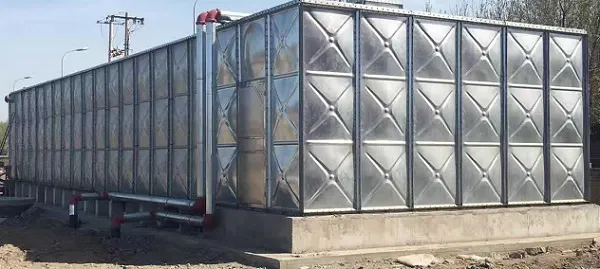loading...
- No. 9, Xingyuan South Street, Dongwaihuan Road, Zaoqiang County, Hengshui, Hebei, China
- admin@zjcomposites.com
- +86 15097380338
- Welcome to visit our website!
Current Market Trends in FRP Rebar Pricing and Cost Analysis
The Current Market Trends of FRP Rebar Prices
In the construction industry, materials play a pivotal role in ensuring the structural integrity and longevity of buildings and infrastructure. Among these materials, fiber-reinforced polymer (FRP) rebar has emerged as a notable alternative to traditional steel rebar. Known for its corrosion resistance, lightweight nature, and high tensile strength, FRP rebar is increasingly being utilized in various applications, particularly in environments prone to chemical attacks. However, one of the pressing concerns for builders and engineers today is the price of FRP rebar, which has become a topic of interest in recent years.
Understanding FRP Rebar
FRP rebar is composed of a matrix of polymer and reinforcing fibers, usually glass, carbon, or aramid. This combination yields a material that has significant advantages over conventional steel rebar. The most significant benefits include its resistance to corrosion, which can prolong the life of concrete structures significantly, making it ideal for use in bridges, parking garages, and coastal structures. Additionally, its lighter weight means that transportation costs can be reduced, and handling on-site is more manageable.
Factors Influencing FRP Rebar Prices
As with any commodity, the price of FRP rebar is influenced by various factors. Some of these include
1. Raw Material Costs The cost of the fibers and the resin used to produce FRP rebar greatly impacts its final price. Fluctuations in the global market for petroleum products (which are involved in resin production) and the prices of fiberglass can lead to significant price variations.
2. Manufacturing Processes The production of FRP rebar involves sophisticated technology and equipment, which can be capital-intensive. Higher operational costs can translate to elevated prices in the market.
3. Demand and Supply Dynamics The broad adoption of FRP rebar in projects such as highway constructions and buildings is increasing. A rise in demand, coupled with limited supply due to manufacturing constraints, can drive prices up.
4. Market Competition As more manufacturers enter the FRP rebar market, competition may influence pricing. Some companies may opt to compete on price, leading to lower costs for end-users, while others may focus more on the innovative qualities of their products, maintaining higher prices.
frp rebar price

5. Regulatory Standards and Testing The need for compliance with building codes and standards can add to the costs, including the need for rigorous testing and quality control measures.
Current Price Trends
As of the latest market analyses in 2023, the price of FRP rebar has shown a lot of variability. In many regions, prices ranged from $3.00 to $7.00 per foot, depending on the type of fiber used and the diameter of the rebar. For instance, glass fiber rebar is generally less costly than carbon fiber rebar, which is known for its superior properties but higher price point.
Recent trends indicate that, as the demand for sustainable building materials continues to grow, FRP rebar might see a sustained increase in prices over the next few years, particularly as more engineering firms and construction companies recognize its advantages over traditional materials.
Future Outlook
Looking ahead, it's important to consider how sustainability trends and advancements in technology will shape the market for FRP rebar. As regulations become stricter on concrete durability and as more projects aim for sustainability certifications, the demand for FRP materials could increase, further influencing prices.
Moreover, emerging technologies in manufacturing processes may lead to cost reductions, ultimately making FRP rebar more accessible for various construction projects. The level of awareness and understanding of FRP’s benefits among architects, engineers, and construction managers will also impact future pricing and usage.
Conclusion
In conclusion, the price of FRP rebar is a reflection of various market forces, including raw material costs, manufacturing processes, and demand-supply dynamics. While prices are currently variable, the future may see a rising trend in costs coupled with an increasing adoption of FRP rebar in the construction sector. As this innovative material continues to showcase its advantages, it is likely that both the market and its pricing structures will evolve, paving the way for a new era in construction materials. Whether you are a builder, an engineer, or a stakeholder in the construction industry, understanding these trends is crucial for informed decision-making in your projects.
-
Transform Your Spaces with FRP Grating SolutionsNewsNov.04,2024
-
The Versatility and Strength of FRP RodsNewsNov.04,2024
-
The Excellence of Fiberglass Water TanksNewsNov.04,2024
-
The Benefits of FRP Grating for Your ProjectsNewsNov.04,2024
-
Elevate Your Efficiency with FRP Pressure VesselsNewsNov.04,2024
-
Welcome to the World of FRP Pressure VesselsNewsOct.12,2024
-
Unveiling the Future of Filtration: Why FRP Filter Vessels are a Game ChangerNewsOct.12,2024
